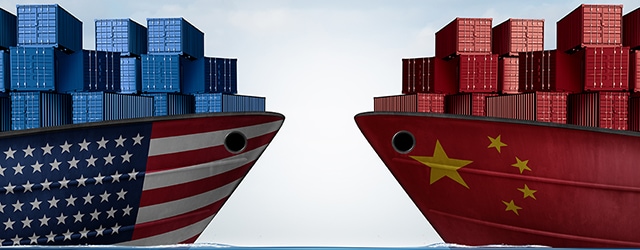Some de-escalation in the US-China trade war.

It was a close call.
When the Trump administration lifted its designation of China as a currency manipulator last month, the decision came days before the two countries were to sign a phase-one trade deal. China had made “enforceable commitments” not to devalue the renminbi, Washington declared.
“Some observers link the renminbi’s strength, and its highest level since last August, to a quid pro quo,” says Marc Chandler, chief market strategist at Bannockburn Global Forex. “China strengthens its currency and the US lifts the designation.” But this assumes that Chinese officials gave the “manipulator” label any significance when the International Monetary Fund itself refuted such claims, Chandler says in a new report, “China Was a Currency Manipulator for a Few Months.”
The leaked US decision to lift the designation was the latest factor fueling the string of record highs for the Standard & Poor’s 500, Chandler argues. “Ultimately, it was seen as a political rather than an economic judgement. China successfully snapped the near-magical significance investors and observers had given the 7-yuan-to-the-dollar level.”
The renminbi also benefits from the confluence of events that have lifted emerging market currencies broadly, Chandler explains. “Events have turned in investors’ favor: China-US trade, UK elections, the USMCA [US-Mexico-Canada trade agreement], containing the US/Iran confrontation, and East Asia outside of Japan looking to be recovering,” he says.
Declining trade tensions undercut the dollar, but a more lasting slide in the greenback in 2020 will depend on evidence of reflation materializing, according to a Bank of America Global Research report. The dollar’s depreciation since the fourth quarter of 2019 “has been fueled largely by the decline in risk aversion after the US and China agreed to the phase-one trade deal,” the report concludes. “This is consistent with our year-ahead 2020 view, which is predicated on reduction in trade policy uncertainty, ultimately leading to a global reflationary response.”
The US Treasury Department labeled China a currency manipulator last August, when the yuan traded at more than seven to the dollar for the first time in a decade. This violated what was considered a line in the sand, and heightened fears of a worsening in the US-China trade war.
“China made enforceable commitments to refrain from competitive devaluation while promoting transparency and accountability,” Treasury Secretary Steven Mnuchin said in a statement last month after delivering a twice-yearly report to Congress. President Trump repeatedly accused China of allowing the value of the renminbi to fall to gain an edge in global trade by making Chinese goods cheaper. Since the height of trade tensions last August, however, the Chinese currency has appreciated.
As a result, Washington placed China on a watch list along with nine other trading partners including Germany, Japan, Italy and South Korea.
Despite China’s trade tensions with the US and the resulting decline in the country’s exports to the US, China’s overall trade surplus increased last year , Chandler noted. China reported a recovery in both imports and exports in December.



